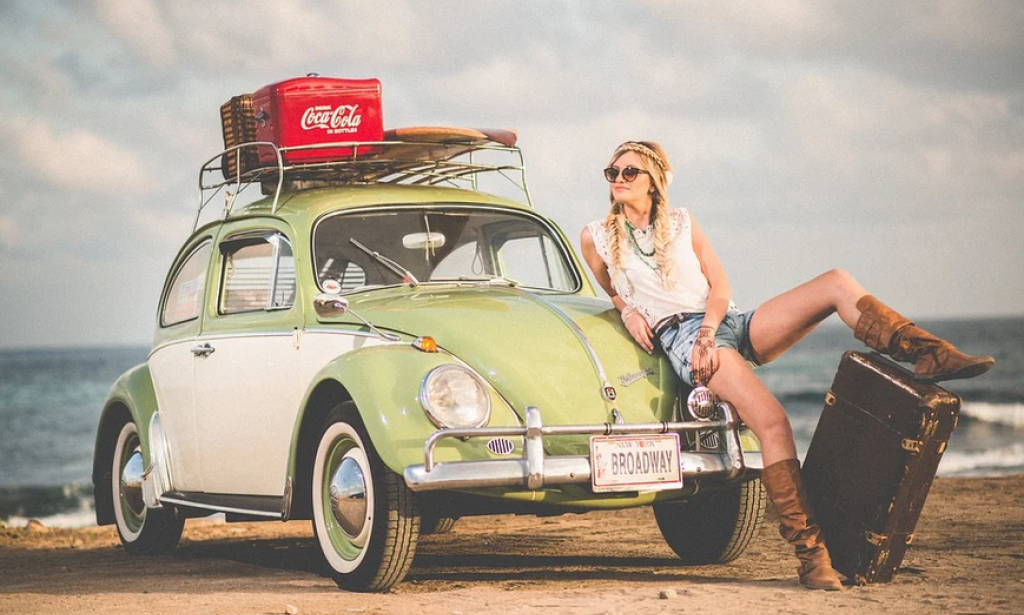Women of all decades are fascinated by shoes. Shoes were mostly practical till the 19th century. With mass production, shoes were considered a part of the total ensemble. Today, a classic pair of retro boots with short skirts is viewed as a fashion statement in the industry. But let's dive into how this all started!
The Early 20th Century
In spite of the great depression in the 1930s, the shoe fashion industry exploded with spectator pumps, heels, and oxfords. The shorter skirts allowed women to wear highly visible footwear in colours other than black, brown, tan, or white.
By now, shoes had to compliment the silhouette to make the whole look work. Heels became taller and straighter, thus tightening the calf muscles, slimming the ankles, and making the legs appear longer.
During World War II, Salvatore Ferragamo’s chopine grew in popularity. The war had a shortage of leather in the market, so substitute leather made of raffia, hemp, or textile became very popular for shoes.
Another style of shoes called Oxfords became prevalent among the masses. These pump-style shoes, completed with lace-up or tie-up details, made for a very comfortable and chic look. Suede leather instead of smooth leather was used to create summer Oxfords in lighter neutral shades.
The Mid-20th Century
Then came the 1950s and the globally reputed stilettos.
These were taller and slimmer heels with a metal core. The stiletto heel is considered to be one of the most aesthetically complimentary shoe styles ever designed. The pointed toe narrowed the foot visually, tightening the calf muscles to give slimmer and toned legs. Even now, a pair of beautiful Italian stiletto can beat any pair of vintage shoes you may have. However, medically it was a disaster. Many women who embraced this type of shoes often tipped in maintenance holes, subways. The curtailed toes gave women bunions and hammertoes.
The Rise in Casual Shoes
Another version of Oxford shoes, known as Saddle Oxfords, rose to fashion between the late 1930s and 1950s. This boxy type of footwear had a white leather upper and a contrasting-coloured saddle over the top. Young women used to wear saddle shoes as daywear or for dances. The trend of going towards more comfortable wear for sports and dances became prevalent from this decade.
The loafer, which is so popular, was originally worn by fishermen in Norway. In the 1930s, this loafer was introduced to the United States, which evolved into the now famous penny loafers. It was initially offered as menswear but became a part of the preppy look for homemakers or teenagers during the 20th century.
The Late 20th Century
After the stilettos that affected numerous women, a new desire for healthy and comforting footwear came into popularity. Women started wearing casual sneakers and boots. Paired with colourful miniskirts, these squared boots highlighted youthfulness in women. Boots made a serious comeback with Cossack-type boots and the short white “Go-Go” boots worn with miniskirts for dancing.
Like many fashion evolutions, the 1970s became a decade for shoe fashion. The return of wedges and platforms showed liberation with elevated sloes putting women on equal footing with their male counterparts. Platform heels complimented the legs without hurting the feet. Hence, they are one of the most innovative retro shoes popular today.
Fashion, in general, became more liberating as women experimented with different kinds of shoes that were made popular with celebrity mass campaigning.
From the late 70s, more and more sports footwear like runners, joggers, cross-trainers, and basketball shoes made entry into the high-fashion industry. Conscious designs with aggressive celebrity marketing created madness globally.
There is no denying that most shoe fashion after the 70s and 80s has revived the retro shoes. The stiletto-heels inspired most high-fashion heels during the late 80s and 90s. The platform and wedge heels have been coming back into the market almost every year with a new incarnation.
The platform heel itself has been re-created so often that it is pretty impossible sometimes to differentiate between a vintage shoe and its modern version. The 90s chunky heels and block heels were a multiplicity to platform heels.
Today the industry is overflowing with choices- chunky heels, low heels, pointed toes, square toes, stilettos, boots, ballerina flats, and so much more. But if you want a statement, invest in an authentic pair of genuine vintage heels or retro boots from Banned Retro. They are one of the leading stores that sell vintage clothes, accessories, and shoes. Check out their website now.



You must be logged in to post a comment.